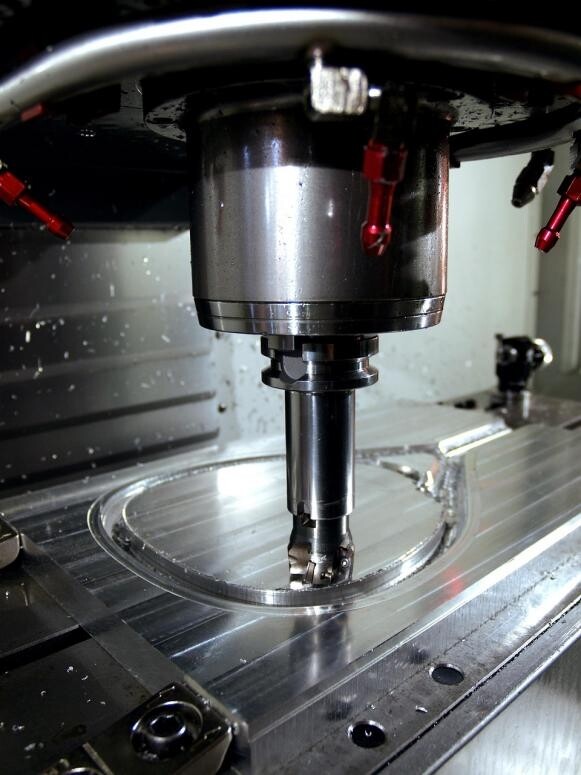Machining, a field that has accompanied mankind’s progress since the Industrial Revolution, is undergoing an unprecedented transformation. As technology continues to advance, the future of machining is full of possibilities. In this article, we will explore in-depth machining technology innovation, application areas and future development trends.
Technological innovation: from traditional to intelligent
Traditional methods of machining, such as turning, milling and grinding, have provided us with a wealth of manufacturing experience. However, with the rise of digitalization and automation technologies, the face of machining is rapidly changing. As we can see, the popularization of numerical control (CNC) machine tool technology has led to a significant increase in machining accuracy and efficiency. Traditional manual operations are gradually being replaced by efficient automated equipment, which not only reduces human error but also improves productivity.
On this basis, the emergence of 3D printing technology has injected new vitality into machining. Through the method of additive manufacturing, 3D printing is able to manufacture complex shaped parts in a short period of time. Compared with traditional subtractive machining, 3D printing not only saves materials, but also realizes more design freedom. The technology is increasingly being used in a wide range of applications, from medical devices to aerospace, demonstrating its strong potential.
At the same time, the introduction of artificial intelligence (AI) and machine learning has led to an increasing level of machining intelligence. Through data analysis, machines can quickly identify problems in processing and make self-adjustments. This self-adaptive ability not only improves productivity, but also dramatically reduces the failure rate. The machine tool of the future will no longer be a simple machine, but an intelligent production system that can learn and optimize the machining process on its own.
Areas of application: broad and diverse
The application areas of machining have expanded from the traditional manufacturing industry to many emerging industries. For example, in the aerospace sector, machining technology is used to manufacture complex engine components and aircraft structures. Advanced machining technologies are particularly important as these components require extremely high levels of precision and reliability.
In the automotive industry, machining needs are changing with the development of electric vehicles and autonomous driving technology. The manufacture of components such as power batteries and electronic control units for electric vehicles requires new machining methods and materials. Meanwhile, the need for lightweighting is prompting automakers to explore new alloys and composites, which are placing greater demands on machining.
The medical field is also driving advances in machining technology. The rise of personalized medicine has led to a surge in demand for customized medical devices. Through precise machining, doctors can create more appropriate medical devices, such as prosthetics and implants, according to the patient’s specific situation. This not only increases medical efficiency but also improves the quality of life of patients.
The electronics industry is also an important application area for machining technology. With the popularization of smart phones, tablet PCs and other electronic products, there is an increasing demand for high-precision small parts. Modern machining technology is able to process at the micron level to meet these high precision needs.
Development trend: the future of machining
Looking to the future, machining trends will be influenced by a number of factors. First, environmental protection and sustainability will become important considerations for the machining industry. With the global emphasis on environmental protection, companies will need to look for more environmentally friendly machining methods and materials. For example, the use of renewable materials and the reduction of waste in the machining process are all directions for future development.
Second, digital transformation will accelerate machining. Many companies are actively exploring Industry 4.0, which connects equipment to the Internet through Internet of Things (IoT) technology to enable real-time monitoring and analysis of data. This not only improves production efficiency, but also allows companies to better respond to market changes and quickly adjust production strategies.
In addition, cybersecurity will become an important issue in the machining industry. With the increasing digitization of equipment and systems, the risk of cyber-attacks increases. How to protect the enterprise’s data security and the security of production equipment will be a challenge that must be faced in the future.
Finally, the combination of talent training and technological innovation will also be the key to the development of the machining industry. With the emergence of new technologies, workers need to have a higher level of technology and operational capabilities. Enterprises should increase their investment in employee training to help them adapt to new technology trends and improve overall productivity.
The future of machining is full of challenges and opportunities. The wave of technological innovation is driving the continuous development of this industry, and the wide range of applications also provides a solid foundation. In the face of the future, the machining industry needs to keep pace with the times and actively respond to various challenges. In this era of rapid change, the only way to be invincible in the fierce competition is to continue to innovate and change. Whether it is technological progress or market demand, machining will continue to play an indispensable role in the global industry.

